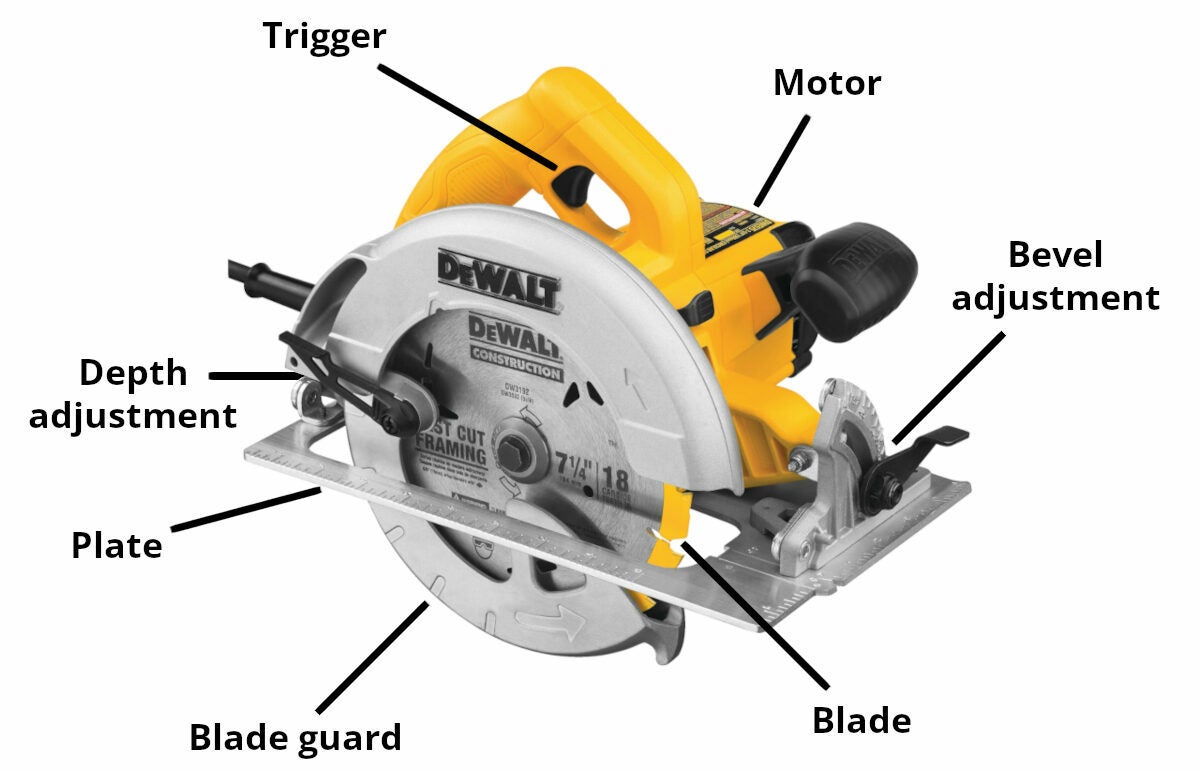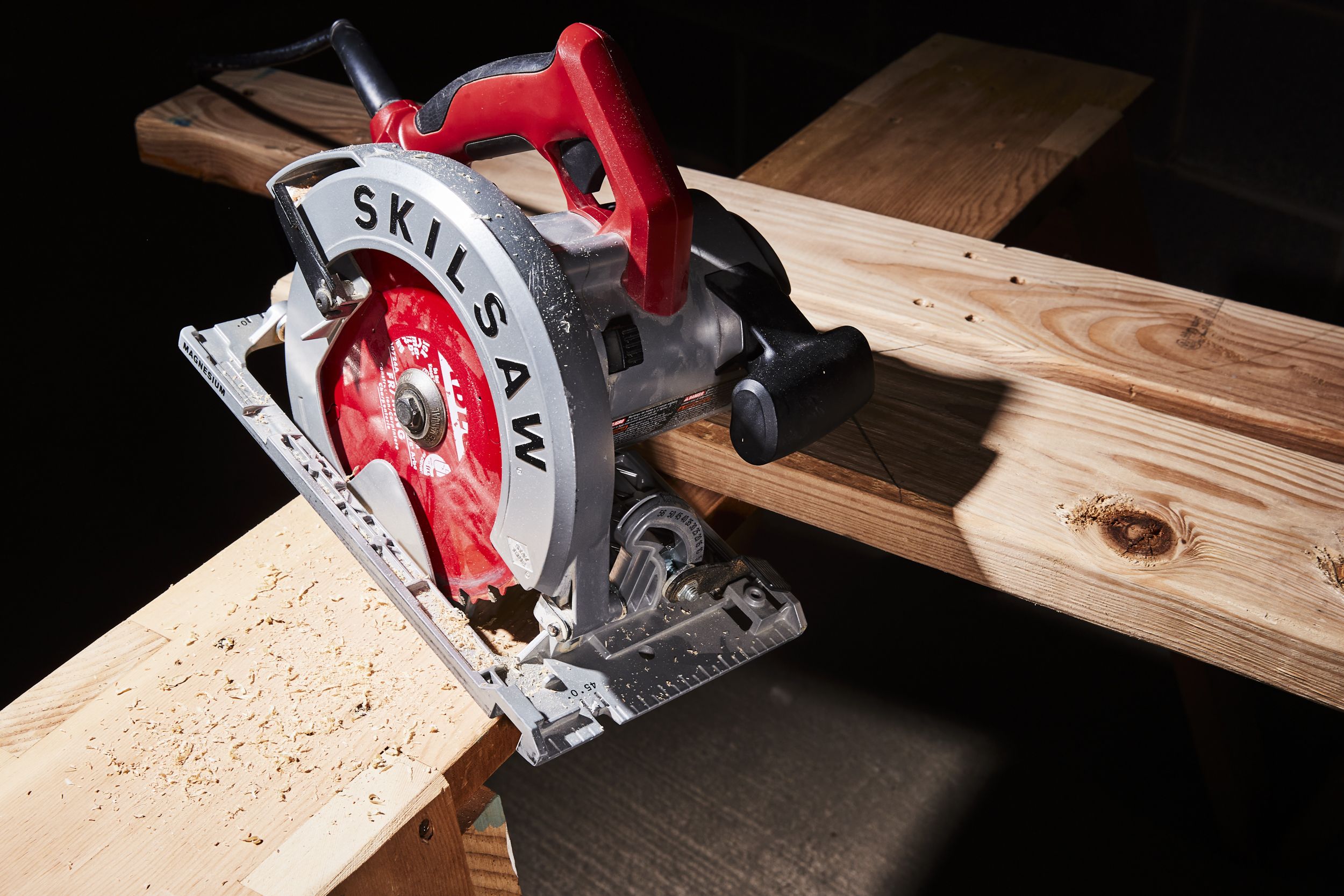Are you wondering what kind of circular saw you need for your DIY projects? Well, you’ve come to the right place! Choosing the right circular saw can make a world of difference in your woodworking adventures. Whether you’re a beginner or a seasoned pro, finding the perfect saw for your needs is crucial.
But with so many options out there, it’s easy to feel overwhelmed. Don’t worry, we’ve got you covered! In this guide, we’ll walk you through the different types of circular saws and help you figure out which one is best suited for you. So let’s dive in and find the perfect tool to bring your woodworking dreams to life!
When it comes to circular saws, there’s no one-size-fits-all answer. The kind of saw you need will depend on the specific tasks you’ll be tackling. From standard circular saws to worm drive saws and compact mini saws, each type has its own unique features and benefits. So, let’s explore the options and find the perfect match for your projects. Get ready to unleash your inner carpenter and make your woodworking dreams a reality!

What Kind of Circular Saw Do I Need?
Choosing the right circular saw can be overwhelming, especially with the wide range of options available in the market. Whether you’re a professional carpenter or a DIY enthusiast, it’s important to select a circular saw that suits your specific needs. In this article, we’ll guide you through the factors to consider when choosing a circular saw and help you find the perfect tool for your projects.
The Types of Circular Saws
Before diving into the details, let’s familiarize ourselves with the different types of circular saws available:
- Standard Circular Saw: This is the most common type, suitable for a variety of applications and great for general-purpose cutting.
- Trim Saw: A smaller and lighter version of a circular saw, perfect for intricate and precise cutting.
- Worm Drive Saw: Known for their power and torque, worm drive saws are ideal for heavy-duty applications such as framing and deck building.
- Sidewinder Saw: Also known as an in-line saw, these saws are lightweight and versatile, making them a popular choice for DIYers.
- Cordless Circular Saw: Powered by rechargeable batteries, cordless saws offer the convenience of portability, allowing you to work in areas without access to electricity.
Each type of circular saw has its own advantages and disadvantages, so it’s important to consider what you’ll be using it for before making a decision.
Considerations when Choosing a Circular Saw
When deciding on the right circular saw for your needs, there are several factors to consider:
Blade Size
The blade size determines the depth of cut and the type of material the saw can handle. Common blade sizes range from 6.5 inches to 10 inches, with larger blades capable of cutting thicker materials.
Power Source
Consider whether you prefer a corded or cordless circular saw. Corded saws offer a consistent power source, while cordless saws provide the flexibility of movement.
Bevel Capacity
Bevel capacity refers to the ability of the saw to make angled cuts. Choose a saw that has a bevel capacity that suits your needs, whether it’s for simple bevel cuts or more complex angled cuts.
Ergonomics
Comfort is key when using a circular saw for extended periods. Look for a saw with a comfortable grip, balanced weight distribution, and easy-to-access controls.
Safety Features
Ensure the circular saw you choose has safety features such as a blade guard and a blade brake. These features protect you from accidents and increase overall safety during operation.
Budget
Lastly, consider your budget. Circular saws come in a wide range of price points, so it’s important to find one that fits your budget while still meeting your needs.
Picking the Perfect Circular Saw for You
Now that you have a better understanding of the different types of circular saws and the factors to consider, it’s time to make your decision. Evaluate your specific needs, prioritize the features that are most important to you, and compare different models in your desired price range. Remember to read reviews and seek recommendations from professionals or experienced DIYers to ensure you’re making an informed choice.
Key Takeaways: What Kind of Circular Saw Do I Need?
- Consider the type of tasks you will be using the circular saw for, such as cutting wood or metal.
- Determine the power and speed requirements based on the thickness and hardness of the materials you will be cutting.
- Choose between corded and cordless saws, considering the availability of power outlets and portability needs.
- Look for a saw with a comfortable and ergonomic handle, as it will reduce fatigue during long hours of use.
- Consider the availability and cost of replacement blades for the circular saw model you are interested in.
Frequently Asked Questions
Are you unsure about which circular saw to choose for your needs? Check out these common questions to help you find the right one.
1. What features should I consider when choosing a circular saw?
When choosing a circular saw, consider the power source, blade size, cutting depth, bevel capacity, and the type of grip or handle that suits your comfort. Determine which features are essential for your specific projects to find the perfect circular saw for you.
For example, if you require portability, consider a cordless saw with a rechargeable battery. On the other hand, if you’ll be working with large, sturdy materials, opt for a saw with a larger blade size and cutting depth.
2. Can I use any circular saw blade with my saw?
No, it’s important to use the correct blade specifically designed for the type of saw you have. Different circular saws use different blade sizes and attachments. Make sure to check the manufacturer’s instructions or consult a professional to find the right blade for your specific saw model and intended cutting material.
Using the wrong blade can affect the accuracy of your cuts and can potentially damage the saw or create safety hazards. There are blades available for cutting various materials such as wood, metal, and plastic, so be sure to choose the appropriate one for your project.
3. How do I determine the cutting capacity of a circular saw?
To determine the cutting capacity of a circular saw, consider its cutting depth and bevel capacity. The cutting depth refers to the maximum thickness that the saw can cut. Bevel capacity, on the other hand, refers to the maximum angle at which the saw can make bevel cuts.
Both of these factors are essential to consider based on the material you’ll be working with and the types of cuts you need to make. Ensure that the saw’s cutting capacity aligns with your project requirements before making a purchase.
4. Should I choose a corded or cordless circular saw?
The choice between a corded or cordless circular saw depends on your specific needs and preferences. Corded saws provide consistent power without the need for recharging, making them suitable for heavy-duty work or tasks that require continuous use.
On the other hand, cordless saws offer portability and greater maneuverability since they are not restricted by a power cord. They’re ideal for projects that involve moving around or working in areas without a power source. Consider your project requirements, the need for portability, and the availability of power sources to make the best choice.
5. What safety features should I look for in a circular saw?
When choosing a circular saw, prioritize safety features such as blade guards, blade brakes, and ergonomic handles. Blade guards protect your hands from coming into contact with the spinning blade while not in use.
Blade brakes work to stop the blade quickly once the trigger is released, reducing the risk of accidents. Additionally, an ergonomic handle design ensures a comfortable and secure grip, reducing the strain on your hands during operation. Paying attention to these safety features will help ensure a safer working environment and reduce the risk of injuries.

Summary
So, to summarize, when choosing a circular saw, there are a few key factors to consider. First, think about the type of projects you’ll be doing and choose a saw with the appropriate power and blade size. Next, consider the features that will make your work easier, such as adjustable settings and safety features. Finally, factor in your budget and choose a saw that offers a good balance of price and quality. By taking these factors into account, you’ll be able to find the right circular saw for your needs and start tackling those woodworking projects with confidence.
